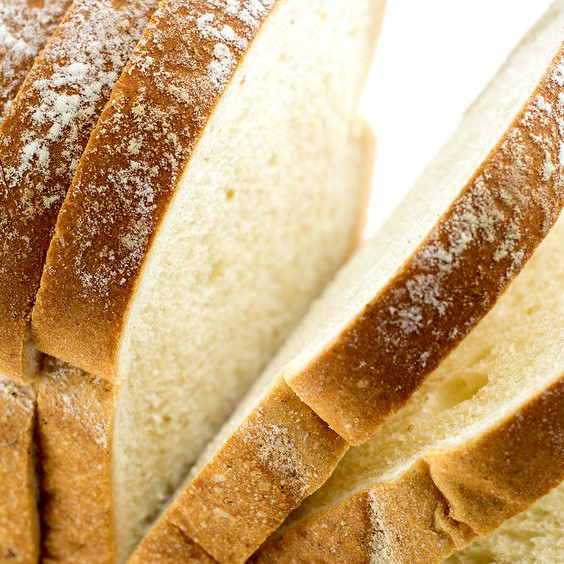
Amylase
Also known as amylolytic or starch-degrading enzymes
What is Amylase?
Amylase is a hydrolytic enzyme that breaks down starch into dextrins and sugars. It’s made up of a family of starch-degrading enzymes that include:1
- Alpha-amylase
- Beta-amylase
- Amyloglucosidase or glucoamylase
- Pullulanase
- Maltogenic amylase
Amylases can work at the same time in perfect synergy. They are key ingredients that extend the shelf-life of bread, working as fermentation improvers.1
Origin
Amylase is widely distributed in nature. It is present in both plants and animals. Cereal and grains and their flours naturally contain different types of amylase. In cereals, it is found in the endosperm, bran and germ.
Commercial production
Amylase is generally produced by commercial fermentation. Bacterial sources such as Bacillus subtilis or B. stearothermophilus are used. Or, fungal sources, such as Aspergillus oryzae or A. niger.
Function
Amylases perform the following functions in bakery products:
- Provide fermentable and reducing sugars.
- Accelerate yeast fermentation and boost gassing for optimum dough expansion during proofing and baking
- Intensify flavors and crust color by enhancing Maillard browning and caramelization reactions.
- Reduce dough/batter viscosity during starch gelatinization in the oven.
- Extend oven rise/spring and improve product volume.
- Act as crumb softeners by inhibiting staling.
- Modify dough handling properties by reducing stickiness.
Application
Features of amylases used in baking include:2,3,4
| Type | EC number | Chemical bond cleaved/Reaction catalyzed | Product | Application |
| α-amylase (liquefying enzyme) | 3.2.1.1. | Random endo-hydrolysis of α(1→4)-D-glucosidic bonds between glucose units in amylose and amylopectin.
Cannot cross a branch point (α-1,6 bond) |
Dextrins of 10–20 glucose units | Production of starch syrups
Sprouting of cereals Anti-staling agents Alpha-amylase has the largest effect on dough properties and bread quality |
| β-amylase | 3.2.1.2 | Exo-hydrolysis of α(1→4)-D-glucosidic bonds
Successively removes maltose from the non-reducing ends of starch. Can not cross a branch point (α-1,6 bond) |
Maltose | Sprouting of cereals
Provides food for yeast for optimum product volume and color |
| Amyloglucosidase or glucoamylase (saccharifying enzyme) | 3.2.1.3 | Exo-hydrolysis of α(1→4)- and α(1→6)-D-glucosidic | Glucose | Decreases proofing time in low‐sugar and frozen dough
Production of high DE starch syrups Provides substrate for glucose oxidase to properly function as dough strengthener |
| Maltogenic amylase | 3.2.1.33 | Hydrolysis of α(1→4)-D-glucosidic bonds | Small dextrins from amylopectin exterior | Anti-staling agent |
| Pullulanase (debranching enzyme) | 3.2.1.41 | Hydrolysis of α-1,6-glucosidic linkages | Branches of starch | Production of starch syrups |
Activity of alpha-amylase
α-amylase only acts on damaged and gelatinized starch. Conversion of starch to dextrins and maltose via α-amylase catalysis takes place as follows:5
Starch + H2O → Dextrins + Maltose
Optimal conditions for α-amylase activity are:
- pH: 5.5–6.0
- Temperature range: 104–140°F (40–60°C)
- Contact time between enzyme and substrate: at least 60 minutes of dough processing
- Water availability: preferably aw of 0.9 or higher
- Amount of damaged and gelatinized starch substrate
- Enzyme dosage relative to substrate: Alpha-amylase is usually added to bread formulations at 0.002–0.006% (20 to 60 ppm) based on flour weight.
The enzymatic activity of α-amylase can be quantified analytically. One unit (1U) is defined as the amount of enzyme needed to release 1 μmol reducing groups, i.e. maltose/min from soluble starch at 25°C at pH 7.0.
α-Amylase can also be quantified indirectly using the Falling Number, RVA or amylograph tests.5
Comparative functionalities of amylases from various sources:
| Source | Purity | Heat resistance / thermal stability | Side activities | Notes |
| Cereal | Low | Medium | High | Can be used in Falling Number (FN) test |
| Fungal | Medium | Low | Medium | Cannot be used in FN test |
| Bacterial | High | High | Low | Extremely heat stable
Over-dose problems |
FDA regulation
This ingredient is considered GRAS (Generally Recognized as Safe) in the US by the FDA. It can be used in food with no limitation other than current good manufacturing practices.6
References
- Mathewson, P.R. Enzymes, 2nd edition, Eagan Press Handbook Series, AACC International, Inc., 1998, pp. 1–105.
- Van Oort, M. “Enzymes in Bread Making.” Enzymes in Food Technology, 2nd edition, Blackwell Publishing Ltd, 2010, pp. 103–143.
- Rosell, C.M., and Dura, A. “Enzymes in Bakeries.” Enzymes in Food and Beverage Processing, CRC Press, Taylor & Francis Group, LLC, 2016, pp. 171–195.
- Prasada Rao, U.J.S., and Hemalatha, M.S. “Enzymes.” Bakery Products Science and Technology, 2nd Edition, John Wiley & Sons, Ltd, 2014, pp. 276–291.
- Bisswanger, H. “Enzyme Assays.” Practical Enzymology, 2nd edition, Wiley-VCH Verlag & Co. KGaA, 2011, pp. 170–174.
- Smith, J. “Enzymes.” Food Additives Data Book, 2nd edition, Blackwell Publishing Ltd., 2011, pp. 366–454.

Shared knowledge. Always Available.
Subscribe Today!
Get our weekly newsletter and sharpen your technical baking knowledge.
